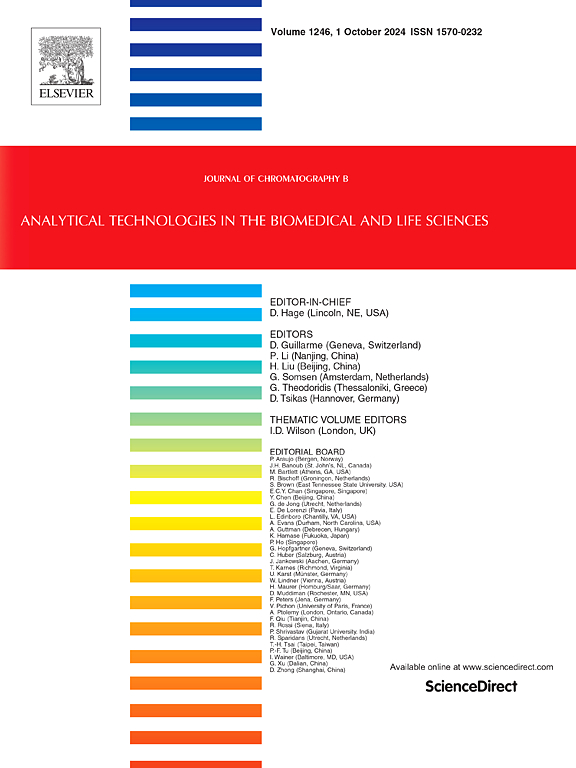Determination of disulfiram and diethyldithiocarbamate in plasma by high performance liquid chromatography with an electrochemical detection using a diamond electrode
IF 2.8
3区 医学
Q2 BIOCHEMICAL RESEARCH METHODS
引用次数: 0
Abstract
Disulfiram (DSF), a drug approved for the treatment of alcoholism, has been increasing attention as an anti-inflammatory agent via inhibit cytoplasmic FROUNT, a common regulator of chemokine receptor CCR2 and CCR5 signaling. Although the determination of DSF in biological fluids, particularly plasma, is important for evaluating drug efficacy, rapid degradation of DSF by albumin often interferes with its accuracy and reproducibility. In this study, cost-effective, selective, and reproducible high-performance liquid chromatography (HPLC) using an electrochemical detector (ECD) equipped with a diamond electrode was used to quantify DSF and its metabolite, diethyldithiocarbamate (DDTC). The limit of quantification (LOQ) for DSF in an albumin-free solution using the HPLC-ECD method was 0.04 μg/mL; however, DSF was not detected in the serum spiked with DSF. Two forms of DSF metabolites, the free and albumin bound forms of DDTC, were detected as methyl-DDTC (MeDDTC) by methyl iodide treatment. The LOQ of MeDDTC in acetonitrile and serum determined using the HPLC-ECD method were 0.41 μg/mL and 1.22 μg/mL, respectively. Plasma MeDDTC was detected in rats that were orally administered DSF (1000 mg/kg) up to 48 h after treatment. This result suggests that HPLC-ECD with a diamond electrode is useful for determining MeDDTC for DSF monitoring in plasma.
求助全文
约1分钟内获得全文
求助全文
来源期刊

Journal of Chromatography B
医学-分析化学
CiteScore
5.60
自引率
3.30%
发文量
306
审稿时长
44 days
期刊介绍:
The Journal of Chromatography B publishes papers on developments in separation science relevant to biology and biomedical research including both fundamental advances and applications. Analytical techniques which may be considered include the various facets of chromatography, electrophoresis and related methods, affinity and immunoaffinity-based methodologies, hyphenated and other multi-dimensional techniques, and microanalytical approaches. The journal also considers articles reporting developments in sample preparation, detection techniques including mass spectrometry, and data handling and analysis.
Developments related to preparative separations for the isolation and purification of components of biological systems may be published, including chromatographic and electrophoretic methods, affinity separations, field flow fractionation and other preparative approaches.
Applications to the analysis of biological systems and samples will be considered when the analytical science contains a significant element of novelty, e.g. a new approach to the separation of a compound, novel combination of analytical techniques, or significantly improved analytical performance.
 求助内容:
求助内容: 应助结果提醒方式:
应助结果提醒方式:


